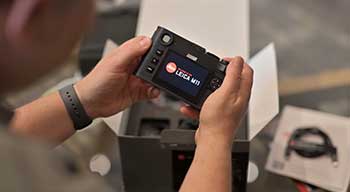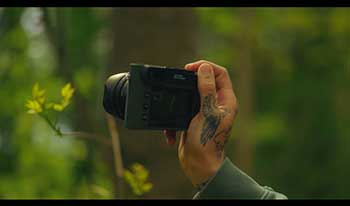Leica cameras have long been coveted by photographers for their impeccable build quality, sharp lenses, and full-frame image sensors. Two of Leica’s latest full-frame mirrorless cameras, the M11 and Q2, exemplify these qualities while catering to different types of photographers.
In this comparison, we’ll take an in-depth look at the key features and differences between the Leica M11 and Q2 to help you determine which camera best fits your needs.
A Brief Comparison Table
| Camera | Leica M11 | Leica Q2 |
| Sensor Resolution | 60MP | 47MP |
| Native ISO Range | 64-50000 | 50-50000 |
| Shooting Modes | Manual focus only | Autofocus or manual |
| Viewfinder | Optical rangefinder | Electronic OLED |
| Video recording | None | 4K 30fps, Full HD 120fps |
| Lens | Interchangeable M mount | Fixed 28mm f/1.7 |
| Image Stabilization | No, lens dependent | Yes, integrated |
| Connectivity | WiFi | WiFi + Bluetooth |
| Body Construction | Weather-sealed magnesium alloy | Weather-sealed magnesium alloy |
| Dimensions | 139 x 80 x 39 mm | 130 x 80 x 92 mm |
| Weight | 640g | 718g |
Overview Of The Leica M11
The Leica M11 is the latest iteration in Leica’s iconic rangefinder camera line. It carries on the legacy of the analogue Leica M film cameras but with a modern full-frame image sensor and other digital capabilities.
Some key features and specifications of the M11 include:

- 60MP full-frame sensor
- Maestro image processor
- ISO range of 64-50000
- Optical 0.92x viewfinder with parallax correction
- 3″ touchscreen LCD
- Integrated WiFi and USB-C connectivity
- Mechanical shutter with shutter speeds up to 1/4000s
- 5.76MP resolution Visoflex optional EVF
- Weather-sealed magnesium alloy body
- Dual UHS-II SD card slots
The M11 omits video recording capabilities to focus purely on still photography. It continues Leica’s minimalist design philosophy with an understated aesthetic, few physical controls, and a focus on the craft of photography.
Also Read: Comparison Between Sony FX30 And A7SIII.
Overview Of The Leica Q2
The Leica Q2 is a fixed-lens full-frame digital camera introduced in 2019. It combines a classic Leica aesthetic with a high-performance feature set.
Key features and specs of the Q2 include:

- 47MP full-frame sensor
- Maestro II image processor
- 28mm f/1.7 Summilux wide-angle lens
- Optical image stabilization
- ISO range of 50-50000
- 3.68MP electronic OLED viewfinder
- 3″ touchscreen LCD
- 4K video at 30fps, Full HD at 120fps
- Bluetooth and WiFi connectivity
- Weather-sealed magnesium alloy body
- UHS-II SD card slot
The fixed 28mm lens on the Q2 delivers outstanding sharpness and a fast f/1.7 maximum aperture. The Q2 retains an old-school rangefinder style while adding modern technologies like 4K video recording.
Image Quality
Both the M11 and Q2 produce stunning image quality, as expected from Leica cameras. However, there are some key differences:
- The M11 has a higher resolution 60MP sensor compared to 47MP on the Q2. This allows the M11 to capture finer details.
- The Q2’s 28mm Summilux lens is extremely sharp edge-to-edge. The M11’s image quality will depend on the M-mount lens used.
- The Q2’s fixed lens has the benefit of integrated optical stabilization, helping reduce blur from camera shake. M-mount lenses for the M11 don’t have stabilization.
- The M11 has a lower native ISO range of 64-50000 versus 50-50000 on the Q2. Both cameras deliver excellent low light high ISO performance.
- Dynamic range is slightly better on the Q2.
- The M11 has 14-bit uncompressed RAW files for maximum editing flexibility.
For most users, the image quality differences between the M11 and Q2 will be minor. Both produce stunning photos and have some advantages over the other. Those needing maximum resolution may lean towards the 60MP M11.
Handling And Ergonomics
The M11 and Q2 take divergent approaches when it comes to handling and control layout:
- The M11 is extremely minimalist with just shutter speed and ISO dials on top. Settings are changed via the touchscreen. It encourages a simplified, purist shooting style.
- The Q2 adds more physical controls including a button dial surrounding the lens, joystick controller, and more customizable buttons. This makes changing settings quicker.
- The M11’s rangefinder system allows you to see outside the framelines for situational awareness. The Q2 uses an electronic viewfinder that shows 100% of the frame.
- The Q2’s fixed 28mm lens makes it quicker and more intuitive to shoot with over the interchangeable lens M11.
- Both cameras have excellent build quality and weather-sealing. The M11 is the lighter and more compact of the two.
- The Q2’s EVF provides a brighter, crisper image compared to the optics of the M11’s rangefinder.
For street or documentary shooting, the M11’s simplicity and discretion can be advantageous. The Q2 is better suited to situations where fast operation and framing precision are needed.
Also Read: Comparison Between Panasonic S1 And S5.
Features And Functionality
The M11 and Q2 take different approaches when it comes to features beyond core imaging:
- The Q2 offers 4K video capture and 120fps Full HD video. The M11 has no video capabilities.
- The Q2 has Bluetooth and WiFi for wireless image transfer and remote control. The M11 has WiFi only.
- The Q2 has a double-hinged LCD that allows creative waist-level shooting angles. The M11’s fixed LCD is simpler and more discreet.
- Both cameras offer mobile companion apps for remote shooting and file browsing. The Q2’s app is more full-featured.
- The M11 optical viewfinder provides a clearer view in very bright sunlight. The Q2’s EVF can struggle in those situations.
- The Q2’s autofocus, while not lightning quick, is more versatile than the M11’s basic contrast-detect AF.
- The M11 has a nearly silent mechanical shutter. The Q2’s shutter is dampened but louder in comparison.
For applications like street photography, the M11’s pared-down features focus your attention on the craft. The Q2 is better suited if you need video capability or more technological amenities when shooting.
Lens Comparison
One of the biggest differences between the two cameras is the M11’s interchangeable lens mount versus the Q2’s fixed 28mm lens:
- The Q2’s 28mm Summilux lens is extremely sharp with gorgeous rendering and a fast f/1.7 maximum aperture. The tradeoff is no flexibility to use other focal lengths.
- The M11 is compatible with Leica’s entire range of M-mount lenses, from 21mm ultra-wides to 135mm telephotos. This versatility allows tailoring the camera to different genres.
- The Q2’s 28mm lens has integrated optical stabilization, a big advantage when shooting handheld. Most M-mount lenses lack stabilization.
- The M11 body is slimmer and easier to carry thanks to not needing to fit a lens permanently. Lens size/weight varies widely depending on the M-mount lens used.
- Manual focus on the M11 works beautifully with focus peaking aids. The Q2 also offers peaking but its fly-by-wire focus ring is less mechanically satisfying.
For shooters who predominantly work in the 28-35mm range, the Q2’s lens delivers incredible quality in a streamlined package. The M11’s interchangeable lenses provide more flexibility if you need very wide or narrow fields of view.
Also watch this!
Frequently Asked Questions (FAQ)
There is no definitive “better” camera between the M11 and Q2. The Q2 offers technological advantages like a brighter EVF, video recording, and integrated stabilization.
But the M11 provides the unmatched experience of Leica’s rangefinder shooting style and interchangeable lenses. For many photographers, the M11 will deliver a more satisfying shooting experience.
With its rangefinder system and extremely quiet shutter, the M11 excels at street, documentary, travel, and candid photography requiring discretion. The interchangeable lenses make it versatile for landscapes, portraits, and other genres. It focuses on deliberate, handcrafted photography rather than speed.
Yes, the M11 delivers excellent image quality even in low light high ISO shooting thanks to its full-frame sensor and Maestro processor. The ISO range of 64-50000 provides lots of flexibility for shooting at night or in dark conditions. Faster aperture M-mount lenses can also help maximize low light performance.
The M11 is an exceptional street photography camera. Key advantages for street shooting include its silent shutter, discrete rangefinder design, unobtrusive operation, and flexibility to use wider angle lenses.
Zone focusing capabilities let you pre-focus for quick reaction shots. It may not be as lightning fast as some mirrorless cameras but provides an immersive street shooting experience.
The Leica M11 and Q2 are both spectacular cameras capable of capturing incredible photos. Choosing between them comes down to your preferred shooting style and needs. The M11 offers a unmatched manual shooting experience and lens flexibility.
The Q2 provides speedy operation and a state-of-the-art feature set. Either camera in the hands of a skilled photographer will produce beautiful Leica images.
Also Read: Choose Between GoPro Max And Hero 9.
Conclusion
Deciding between the Leica M11 and Q2 comes down to weighing their strengths and limitations against your needs:
- For street, documentary, or travel shooting, the M11 is slimmer, simpler, and less conspicuous. Its rangefinder system allows situational awareness while framing. Interchangeable lenses provide more flexibility.
- For applications like landscape, architecture, or vacations, the Q2’s fixed 28mm lens captures incredibly detailed, sharp images without needing to change lenses. Its brighter EVF makes it easier to compose images in bright daylight.
- If you need autofocus for moving subjects or video recording, the Q2 is the better choice. The M11 specializes in deliberate manual focus photography.
- For low light shooting, the M11’s lower native ISO range gives it a minor edge. Both cameras deliver excellent high ISO noise control.
- If you desire the history and shooting experience of Leica’s legendary M rangefinders, the M11 is the obvious choice. The Q2 offers modern technologies like EVF and video in a classic Leica frame.
Both the M11 and Q2 produce extraordinary image quality in exquisitely crafted cameras. Choosing between them means considering your style of shooting and the types of photos you want to capture. For many Leica devotees, the ideal solution is having both the M11 and Q2 in your camera bag! Each one shines for different scenarios and photographers.
